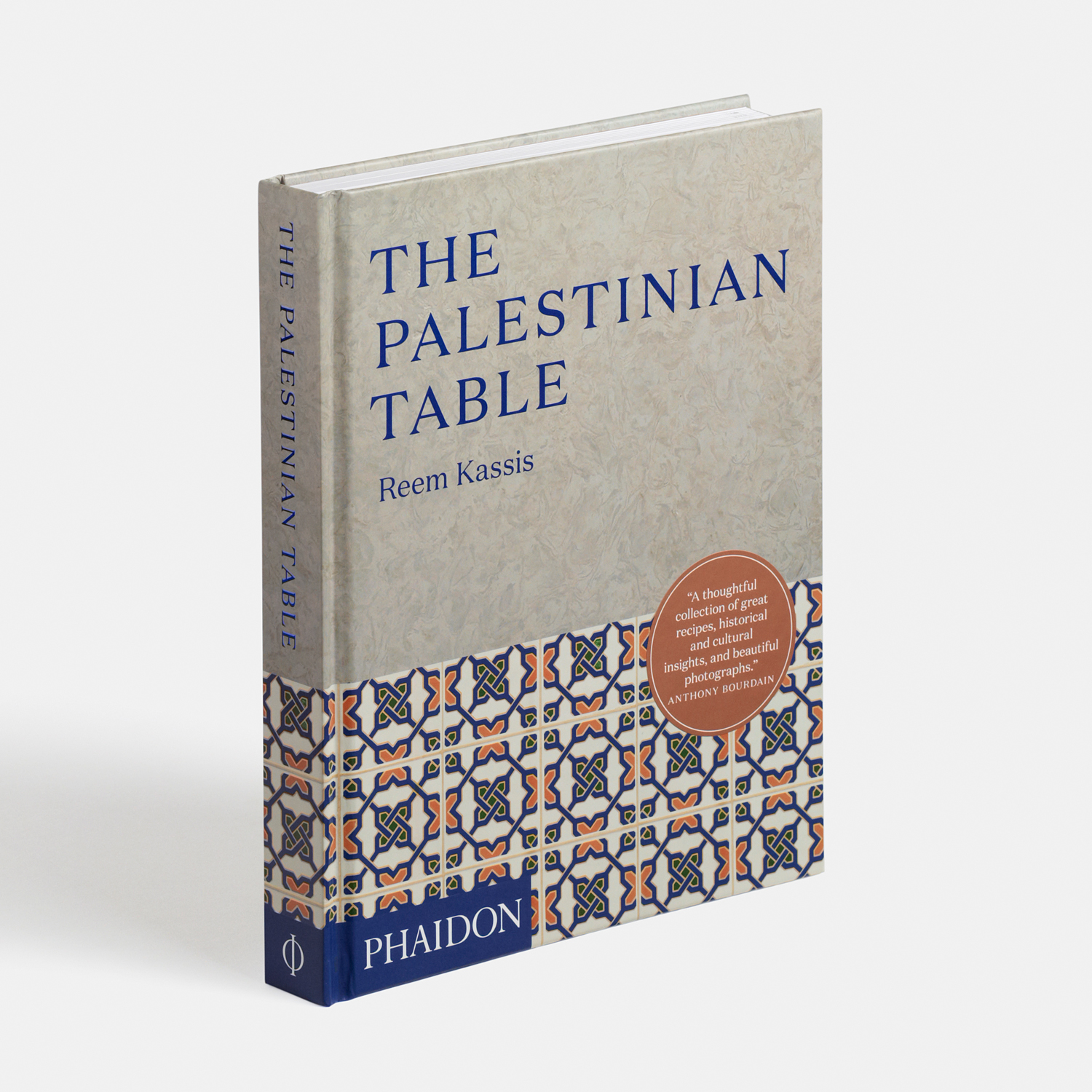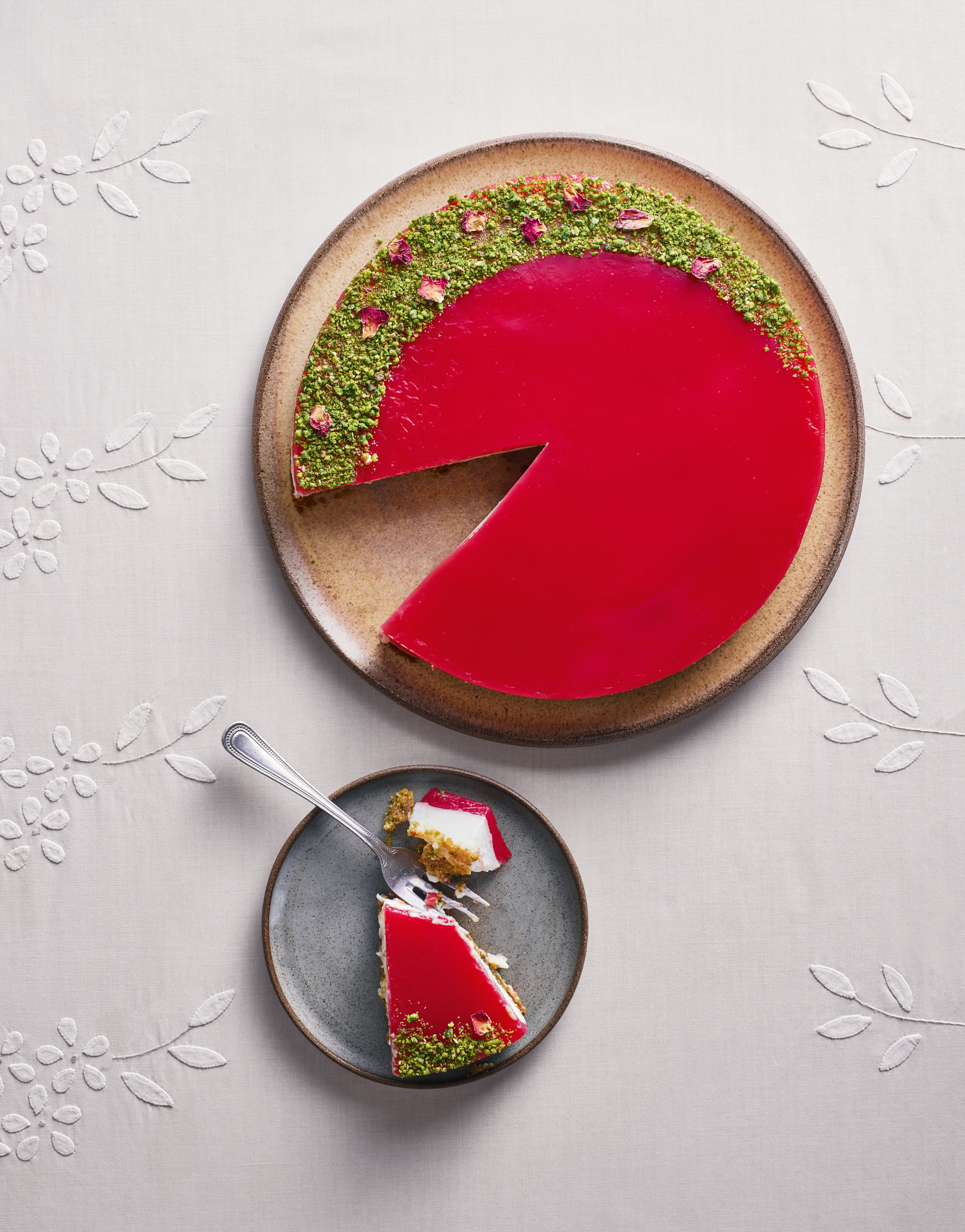
End Ramadan with these sweet treats!
Try these toothsome recipes from The Arabesque Table for Eid-ul-Fitr
This week sees the end of Ramadan and the beginning of Eid-ul-Fitr, also known as the Sweet Eid, when many Muslims break their fast with a feast of sugary treats. Reem Kassis’s new book The Arabesque Table, features plenty of recipes for traditional dishes, such as maamoul biscuits, as well as smart updates for cooks wanting to pay tribute to an Arabian influence in their cookery, while staying abreast of the times. If you’re celebrating Eid-ul-Fitr, or even if you just fancy a sweet, sophisticated pick-me-up this week, why not try making one of these?
Kassis’s striking looking muhallabiyeh and hibiscus rose tart (top) is actually an update of an old classic, muhallabiyeh, a milk pudding. To make the crust you’ll need ¾ cup (2 ½ oz/75 g) graham cracker (digestive biscuit) crumbs (about 5 full sheets graham crackers); ¾ cup (2 ½ oz/75 g) pistachios; ½ cup (3 ½ oz/100 g) sugar; 6 tablespoons (3 oz/85 g) unsalted butter, melted; and a pinch of salt. For the muhallabiyeh filling it’s 1 ½ cups (12 fl oz/350 ml) whole milk; 1 cup (8 fl oz/250 ml) heavy (double) cream scant ½ cup (3oz/90 g) sugar; ½ cup (1 ¾ oz/50 g) cornstarch (cornflour); 2 teaspoons rose water. And for the hibiscus topping it’s ⅓ cup (10 g) dried hibiscus flowers; 3 tablespoons sugar; ½ cup (1 ¾ oz/50 g) cornstarch (cornflour); and a teaspoon rose water.

First preheat the oven to 350°F (180°C/Gas Mark 4). Line the bottom of a 9-inch (23 cm) springform pan with a round of parchment paper. In a food processor, combine the graham crackers, pistachios, and sugar and pulse until finely ground. Add the melted butter and salt and mix until evenly incorporated. Press the crumb mixture evenly into the bottom of the springform. Bake the crust for 10 minutes, then set aside to cool completely before you prepare the filling. Leave the oven on.
In a saucepan, combine 1 cup (8 fl oz/250 ml) of the milk, the cream, and sugar and bring to a simmer over medium heat. Meanwhile, in a small bowl, stir the remaining ½ cup (4 fl oz/120 ml) milk into the cornstarch (cornflour) until fully dissolved. When the milk and cream are on the verge of coming to a boil, pour in the rose water and the cornstarch mixture and whisk constantly until the mixture thickens, 1–2 minutes. Remove from the heat and pour the mixture into the center of the tart shell and lightly tap the pan to even out the surface. Refrigerate to cool while you prepare the hibiscus topping.
Finally, to make the hibiscus topping, in a saucepan, combine the hibiscus flowers with 2 cups (16 fl oz/475 ml) water and the sugar and bring to a boil. Simmer for 1–2 minutes, then strain the tea and return to the saucepan over low heat. In a small cup, stir ½ cup (4 fl oz/120 ml) water into the cornstarch until dissolved. Add the cornstarch mixture and the rose water to the hibiscus tea, whisking constantly. The hibiscus will thicken almost immediately, so remove it from the heat and allow it to cool for a minute or two, stirring constantly. Pour the hibiscus mixture over the muhallabiyeh and lightly tap the cake pan to smooth out the surface. Refrigerate for at least two hours. If desired, garnish with coconut and slivered pistachios. To serve, remove the sides of the springform pan and slide the tart off the base onto a platter.
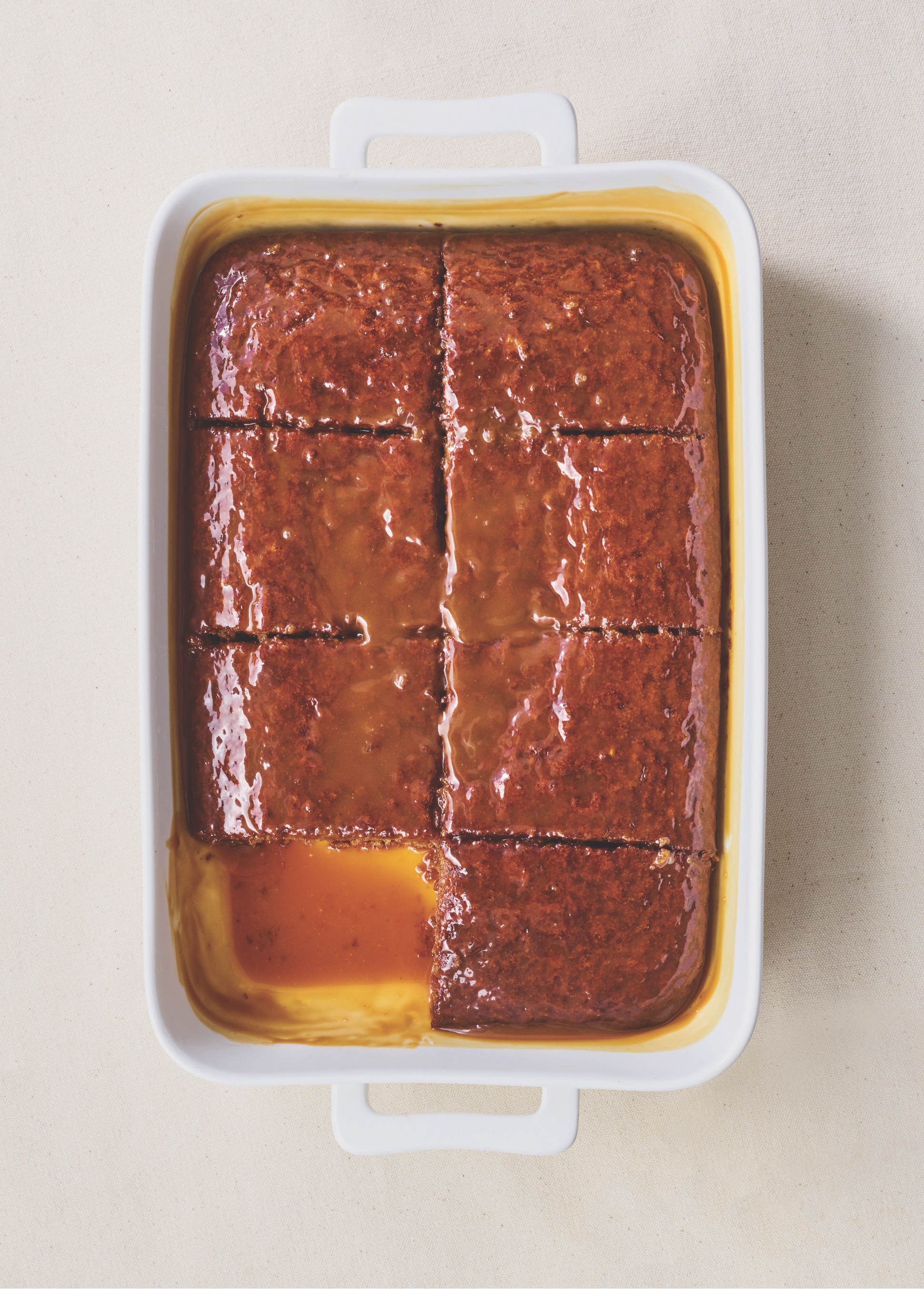
Kassis’s tahini toffee pudding is actually a version of a British dessert, though her addition of dates and tahini gives a distinctive, Arabesque edge. To cook it you’ll need butter and flour, for the pan 9 oz (250 g) pitted Medjool dates; 1 cup (8 fl oz/250 ml) boiling water; 1 teaspoon vanilla extract; 4 ½ tablespoons; (2 ½ oz/70 g) unsalted butter; ¾ cup (5 ⅓ oz/150 g) granulated sugar; 2 eggs; 5 tablespoons tahini; 1 ½ cups (7 oz/200 g) all-purpose (plain) flour; 2 teaspoons baking soda (bicarbonate of soda); 1 teaspoon baking powder; as well as, for the toffee sauce: ¾ cup (6 fl oz/175 ml) heavy (double) cream; 6 tablespoons (3 oz/85 g) unsalted butter; scant ½ cup (3 oz/85 g) light brown sugar; 3 tablespoons date molasses; 1 tablespoon tahini; and a pinch of salt.
Preheat the oven to 350°F (180°C/Gas Mark 4). Butter and flour a 9-inch (23 cm) round or 9 x 13-inch (23 x 33 cm) rectangular cake pan. In a food processor, combine the dates, boiling water, and vanilla and blend into a smooth purée. Transfer to a bowl and set aside.In the same food processor bowl, combine the butter and granulated sugar and cream until pale and well combined. Add the eggs and tahini and process until you have a pale smooth purée.Tip the flour, baking soda (bicarb), and baking powder into the food processor and process until combined. Fold the date mixture back in and process just until combined, taking care not to overbeat the batter. Scrape the batter into the prepared cake pan and transfer to the oven. Bake until a skewer inserted into the center comes out clean, about 45 minutes.
Meanwhile, make the toffee sauce: In a small saucepan, combine the cream, butter, brown sugar, and date molasses and cook over low heat until the butter melts. Increase the heat to medium and bring the mixture to a boil. Simmer for 2–3 minutes, stirring occasionally, until slightly thickened. Remove from the heat, add the tahini and salt, and give one final stir. The tahini toffee sauce should be warm when served and can be reheated on the stovetop if necessary. To serve, place an individual slice on a serving plate, top with ice cream or yogurt, and drizzle with the warm sauce.
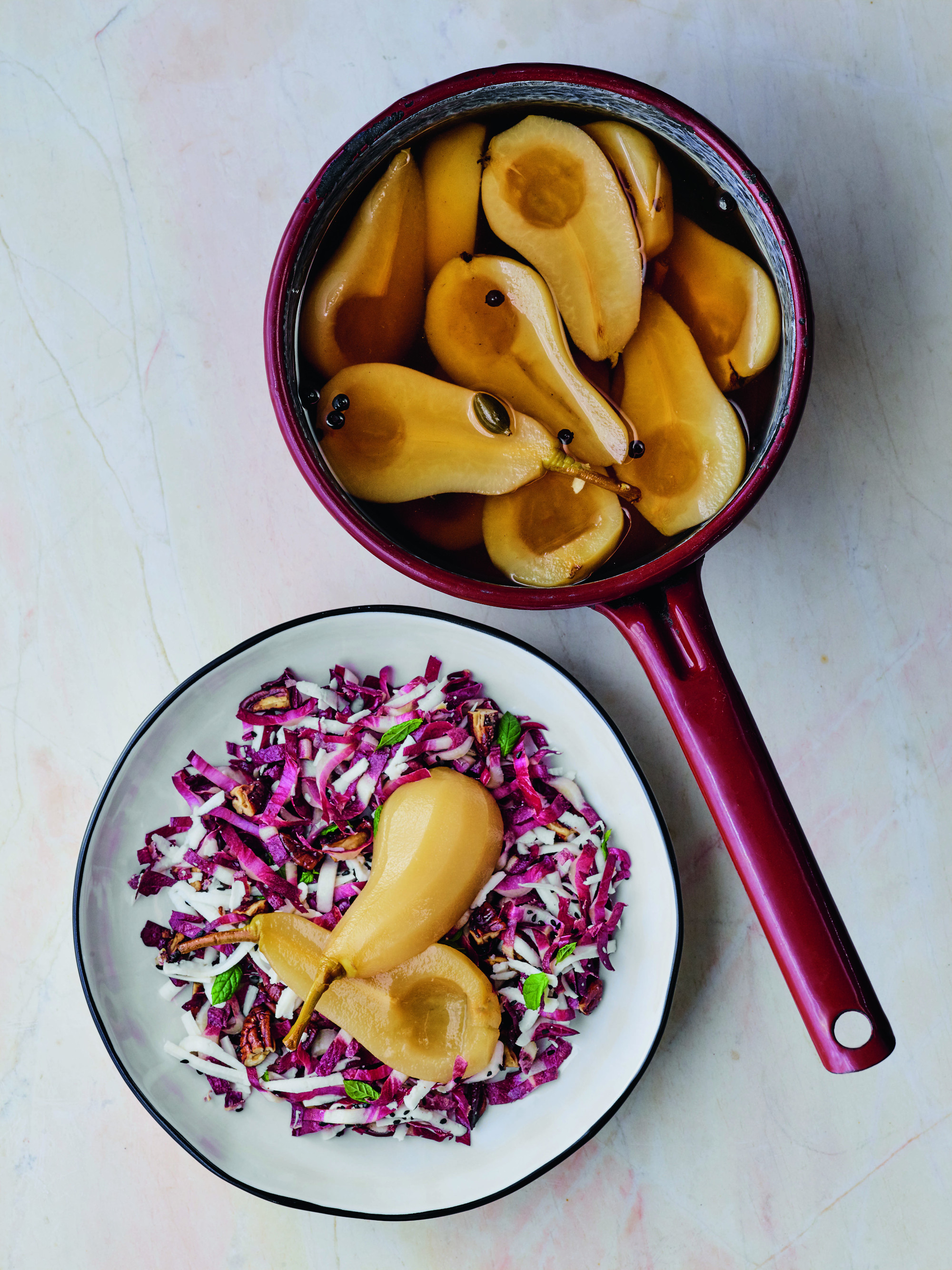
Finally, for a distinctly Arabesque take on the French fancy of wine-poached pears, try baharat poached pear with radicchio white cheese slaw and candied pecans.
You’ll need 6 firm-ripe Bosc or Conference pears; 5 cups (40 fl oz/1.2 liters) apple juice; ½ cup (3 ½ oz/100 g) sugar; 10 black peppercorns; 5 cardamom pods; 5 allspice berries; 4 whole cloves; 1 cinnamon stick. Then for the slaw you’ll need 3 cups (7 oz/200 g) shredded radicchio; 6 oz (170 g) Akkawi or halloumi cheese, coarsely grated; ½ cup (1 ¾ oz/50 g) candied pecans, very coarsely chopped; 2 tablespoons fresh lemon juice; 1 teaspoon nigella seeds; and a few sprigs fresh mint, leaves picked and roughly torn.
First peel the pears, halved lengthwise, and use a measuring spoon to scoop out the seeds. Place the pears in a large saucepan and add the apple juice, sugar, and whole spices. Cover with a round of parchment paper with a small hole cut in the center (or put a plate on top) to keep the pears submerged in the liquid. Bring the saucepan to a boil, then reduce the heat and simmer until the pears are fully cooked through but not falling apart, 25–50 minutes. A point of a knife should very easily pierce the pears when ready.
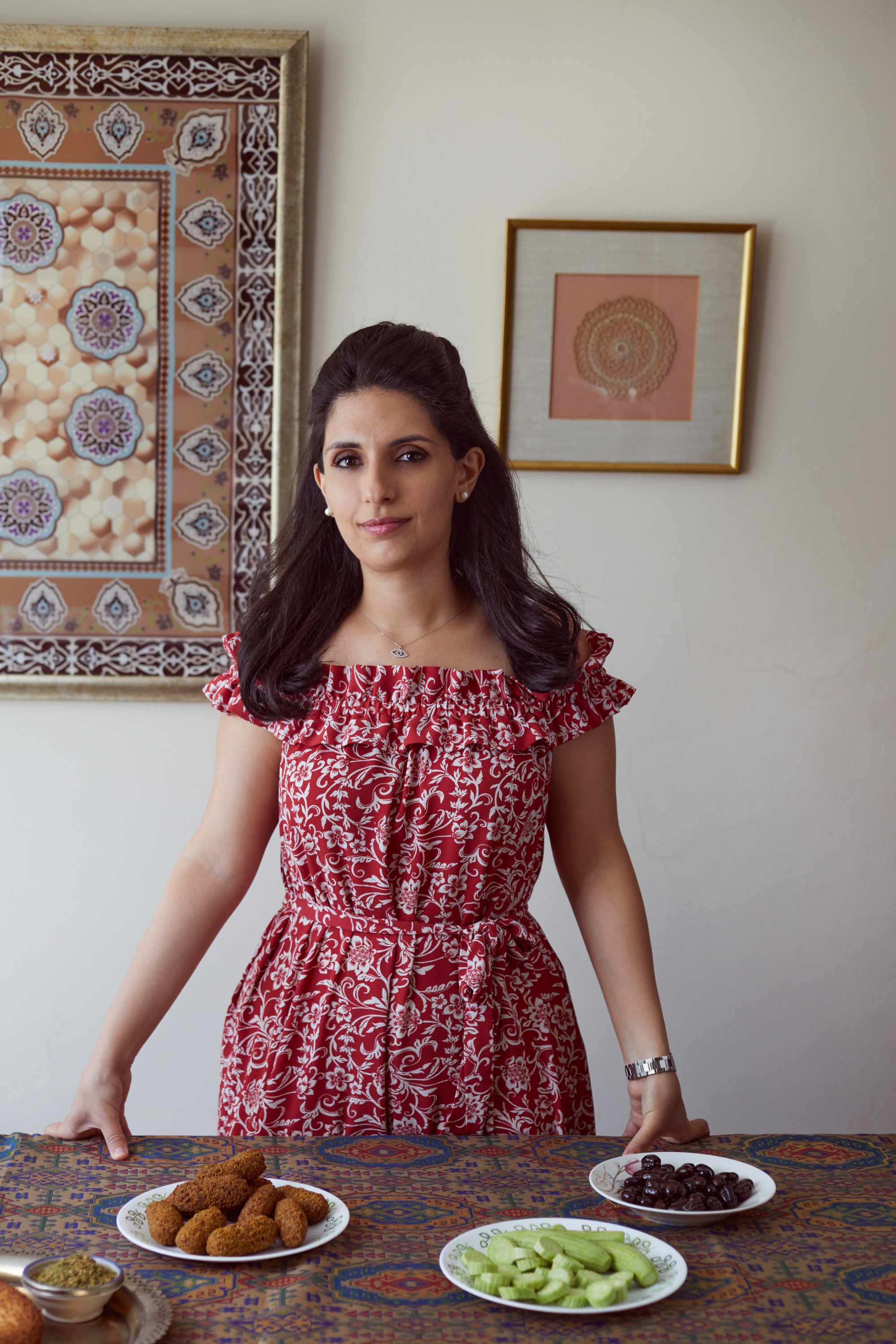
Remove the pears from the heat and allow to cool in the poaching syrup before refrigerating overnight. (This step can be done up to several days in advance as the pears continue to absorb and improve in flavor the longer they sit in the syrup.)
Meanwhile, make the slaw:In a bowl, combine the radicchio, cheese, candied pecans, lemon juice, nigella seeds, and mint leaves. Add 4 tablespoons of the pear poaching liquid and toss to combine. To serve, spoon some of the slaw into individual serving dishes and top with two pear halves (or a whole pear).
For the full recipes and the background to many of the dishes above, as well as much more besides, get a copy of The Arabesque Table here.
